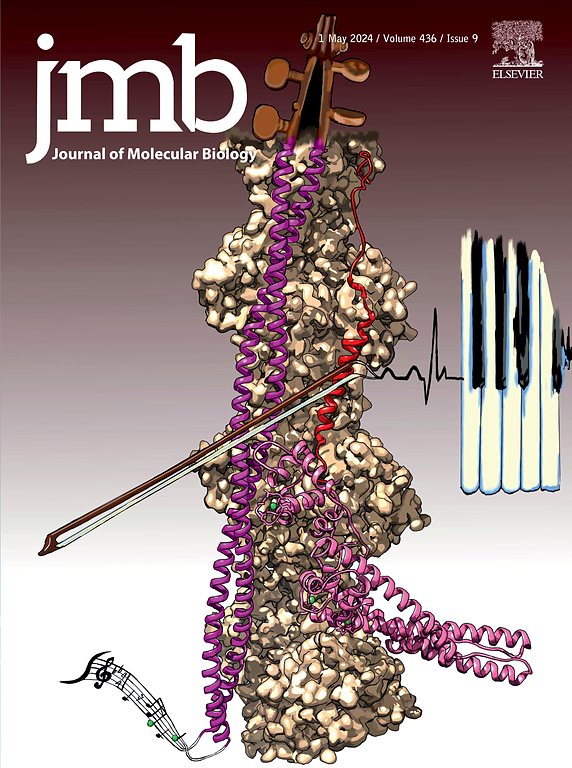一个以ph为中心的核仁活性和调控模型
IF 4.7
2区 生物学
Q1 BIOCHEMISTRY & MOLECULAR BIOLOGY
引用次数: 0
摘要
核仁对于高效准确地生产核糖体亚基至关重要,而核糖体亚基对于组装核糖体至关重要,核糖体是负责蛋白质合成的细胞机器。对其液体样性质的新见解揭示了其独特的生物物理特性在该细胞器的活性和调节中的作用。从这个角度来看,我们研究了最近对核仁生物物理稳态的见解,重点关注其作为酸性生物分子凝聚物的调节。我们回顾了目前关于核仁组成和生化活动如何产生和维持质子梯度的证据。此外,我们提出了一个综合模型来解释核核酸度如何在分子水平上促进体内平衡,为其在健康和疾病中的作用提供了一个统一的框架。本文章由计算机程序翻译,如有差异,请以英文原文为准。

A pH-Centric Model of Nucleolar Activity and Regulation
The nucleolus is essential for the efficient and accurate production of ribosomal subunits, which are crucial for assembling ribosomes—the cellular machinery responsible for protein synthesis. Emerging insights into its liquid-like nature have shed new light on the role of its unique biophysical properties in the activity and regulation of this organelle. In this perspective, we examine recent insights into nucleolar biophysical homeostasis, with a focus on its regulation as an acidic biomolecular condensate. We review current evidence on how nucleolar composition and biochemical activities could generate and maintain a proton gradient. Additionally, we propose an integrative model explaining how nucleolar acidity contributes to homeostasis at a molecular level, providing a unified framework for its role in health and disease.
求助全文
通过发布文献求助,成功后即可免费获取论文全文。
去求助
来源期刊

Journal of Molecular Biology
生物-生化与分子生物学
CiteScore
11.30
自引率
1.80%
发文量
412
审稿时长
28 days
期刊介绍:
Journal of Molecular Biology (JMB) provides high quality, comprehensive and broad coverage in all areas of molecular biology. The journal publishes original scientific research papers that provide mechanistic and functional insights and report a significant advance to the field. The journal encourages the submission of multidisciplinary studies that use complementary experimental and computational approaches to address challenging biological questions.
Research areas include but are not limited to: Biomolecular interactions, signaling networks, systems biology; Cell cycle, cell growth, cell differentiation; Cell death, autophagy; Cell signaling and regulation; Chemical biology; Computational biology, in combination with experimental studies; DNA replication, repair, and recombination; Development, regenerative biology, mechanistic and functional studies of stem cells; Epigenetics, chromatin structure and function; Gene expression; Membrane processes, cell surface proteins and cell-cell interactions; Methodological advances, both experimental and theoretical, including databases; Microbiology, virology, and interactions with the host or environment; Microbiota mechanistic and functional studies; Nuclear organization; Post-translational modifications, proteomics; Processing and function of biologically important macromolecules and complexes; Molecular basis of disease; RNA processing, structure and functions of non-coding RNAs, transcription; Sorting, spatiotemporal organization, trafficking; Structural biology; Synthetic biology; Translation, protein folding, chaperones, protein degradation and quality control.
 求助内容:
求助内容: 应助结果提醒方式:
应助结果提醒方式:


